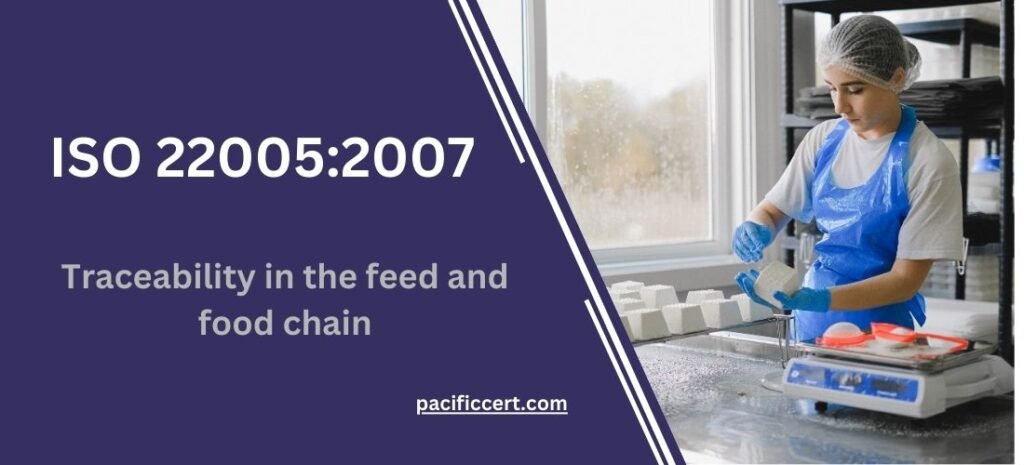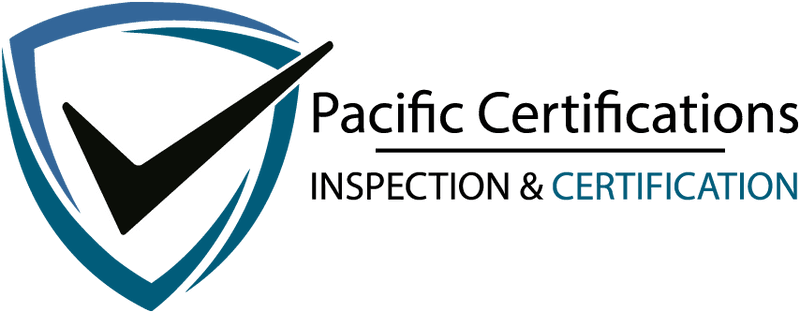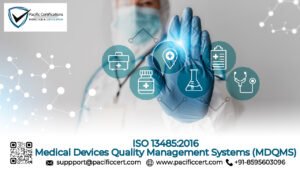
What is ISO 22005:2007-Traceability in the feed and food chain?
ISO 22005:2007 is an international standard that focuses on traceability in the feed and food chain. It provides general principles and basic requirements for designing and implementing traceability systems in the feed and food industry.
The standard aims to ensure transparency, accountability, and reliability throughout the supply chain by enabling the identification and tracking of products, ingredients, and materials as they move through various stages of production, processing, and distribution.
Here are some key points covered by ISO 22005:2007:
Scope: The standard applies to all stages of the feed and food chain, including primary production, processing, manufacturing, and distribution.
Definitions: It provides definitions of important terms related to traceability. Such as traceability system, traceability unit, traceability step, etc.
General Principles: The standard outlines key principles of traceability. Including the establishment of clear objectives, the identification of traceability steps and units, the use of appropriate identifiers, and the implementation of necessary controls.
System Design: ISO 22005:2007 provides guidance on designing a traceability system. Including establishing traceability requirements, determining the scope of traceability, and defining the necessary procedures and documentation.
System Implementation: The standard outlines the steps for implementing a traceability system. Including the establishment of traceability procedures, the identification and registration of traceability units. Also, the implementation of appropriate record-keeping and documentation practices.
Information Management: It addresses the management of information related to traceability. Including the collection, storage, retrieval, and communication of traceability data and records.
Verification and Validation: The standard emphasizes the importance of verifying and validating the effectiveness of the traceability system through regular audits, inspections, and testing.
Continuous Improvement: It encourages organizations to continually review and improve their traceability systems by monitoring performance, addressing non-conformities, and implementing corrective actions.
ISO 22005:2007 provides general principles and guidelines for traceability systems rather than specific requirements. So, Organizations can use this standard as a reference to develop and implement their traceability systems based on their specific needs and requirements.
Requirements of ISO 22005
Clear objectives: Establishing clear goals and objectives for implementing traceability within the feed and food chain.
Identification of traceability units and steps: Identifying the specific products, ingredients, materials, and processes that need to be traced throughout the supply chain.
Appropriate identifiers: Implementing suitable identification methods (e.g., labeling, coding, batch numbers) to enable the tracking and tracing of traceability units.
Control measures: Implementing appropriate control measures to ensure the integrity and accuracy of traceability information. Including documentation, record-keeping, and data management practices.
Verification and validation: Regularly verifying and validating the effectiveness of the traceability system through audits, inspections, and testing.
Continuous improvement: Continually reviewing and improving the traceability system through monitoring, analysis, and the implementation of corrective actions.
Benefits of ISO 22005
Enhanced Food Safety: Traceability systems enable the identification and tracking of products, ingredients, and materials throughout the supply chain. In the event of a food safety issue or product recall, traceability can help quickly locate the source of the problem, limit its spread, and initiate timely corrective actions, thereby safeguarding consumer health and reducing potential risks.
Quality Control: Traceability systems can contribute to better quality control by allowing organizations to monitor and track the movement of goods at various stages of production, processing, and distribution. Moreover, This visibility enables early detection of any deviations or quality issues, facilitating prompt corrective actions and ensuring consistent product quality.
Regulatory Compliance: Many jurisdictions have specific requirements for traceability in the feed and food industry. Implementing traceability systems aligned with ISO 22005:2007 can assist organizations in meeting these regulatory obligations. And demonstrating compliance with applicable laws and standards.
Supply Chain Management: Traceability systems provide valuable information about the origin, handling, and distribution of products. This information can help organizations optimize supply chain processes. Such as inventory management, logistics, and demand planning, leading to improved efficiency, reduced waste, and better overall resource utilization.
Consumer Confidence and Transparency: Traceability systems contribute to building consumer trust and confidence by providing clear information about the origin, production methods, and handling of feed and food products. Moreover, it enhanced transparency enables consumers to make informed choices, fosters brand loyalty, and supports organizations in meeting the growing demand for food traceability and sustainability.
Crisis Management and Recall Effectiveness: In the unfortunate event of a product recall or crisis situation, a well-implemented traceability system can significantly aid in crisis management efforts. It enables organizations to identify and isolate affected products promptly, communicate with stakeholders, and take appropriate corrective actions. Thereby minimizing the potential impact on reputation and brand integrity.
Improved Efficiency and Cost Reduction: Traceability systems can streamline business processes, reduce errors, and improve operational efficiency. By providing accurate and timely information, organizations can minimize waste, optimize inventory management, and reduce response times. Also, identify areas for process improvement, leading to potential cost savings.
Supply Chain Collaboration and Risk Mitigation: Traceability systems facilitate collaboration and communication among different stakeholders in the feed and food chain. Sharing traceability information promotes trust, enables better risk assessment and mitigation. Also, supports collaborative efforts to address challenges. Such as food fraud, adulteration, and unauthorized substances.
Who needs ISO 22005-Traceability in the feed and food chain
Producers and Farmers: Traceability systems help producers and farmers track the origin and movement of their agricultural inputs. Such as seeds, fertilizers, and pesticides. It enables them to monitor and document production practices, ensuring compliance with quality standards and regulatory requirements. Traceability also assists in identifying and managing potential risks. Such as disease outbreaks or contamination events.
Food Manufacturers and Processors: Traceability systems provide food manufacturers and processors with visibility into the sourcing of raw materials, ingredients, and additives used in their products. So, They can trace the flow of materials through various processing stages, ensuring product integrity, quality control, and compliance with labeling and safety regulations. In case of product issues, traceability facilitates targeted recalls and minimizes the impact on consumers and the brand.
Distributors and Wholesalers: Traceability systems support distributors and wholesalers in managing inventory, logistics, and product traceability throughout the supply chain. They can accurately track the movement of products from suppliers to retailers, enabling efficient stock management, order fulfillment, and supply chain optimization. Traceability also helps in identifying potential issues during distribution and ensuring product authenticity.
Retailers: Retailers can benefit from traceability systems by ensuring the integrity and quality of the products they sell. Moreover, They can verify the origin and authenticity of products, establish product shelf life and rotation procedures, and provide consumers with accurate information about the products’ attributes. Such as organic, GMO-free, or fair-trade certifications. Traceability enhances consumer trust and confidence in the products offered by retailers.
Regulatory Authorities: Traceability systems assist regulatory authorities in monitoring and enforcing compliance with food safety regulations, labeling requirements, and other industry standards. Traceability data provides crucial information during audits, inspections, and investigations, allowing authorities to trace the flow of products and materials across the feed and food chain. Also, take appropriate regulatory actions, if necessary.
Finally, Consumers: Traceability systems empower consumers by providing transparency and information about the products they purchase and consume. Consumers can make informed choices based on their preferences, dietary needs, and values. Such as organic, sustainable, or allergen-free products. Traceability enhances consumer confidence in the safety and quality of the feed and food products they buy.
Pacific Certifications is accredited by ABIS, Click here to apply for ISO 22005 or get in touch with us at +91-8595603096 or support@pacificcert.com
Read About: ISO 14020:2000







